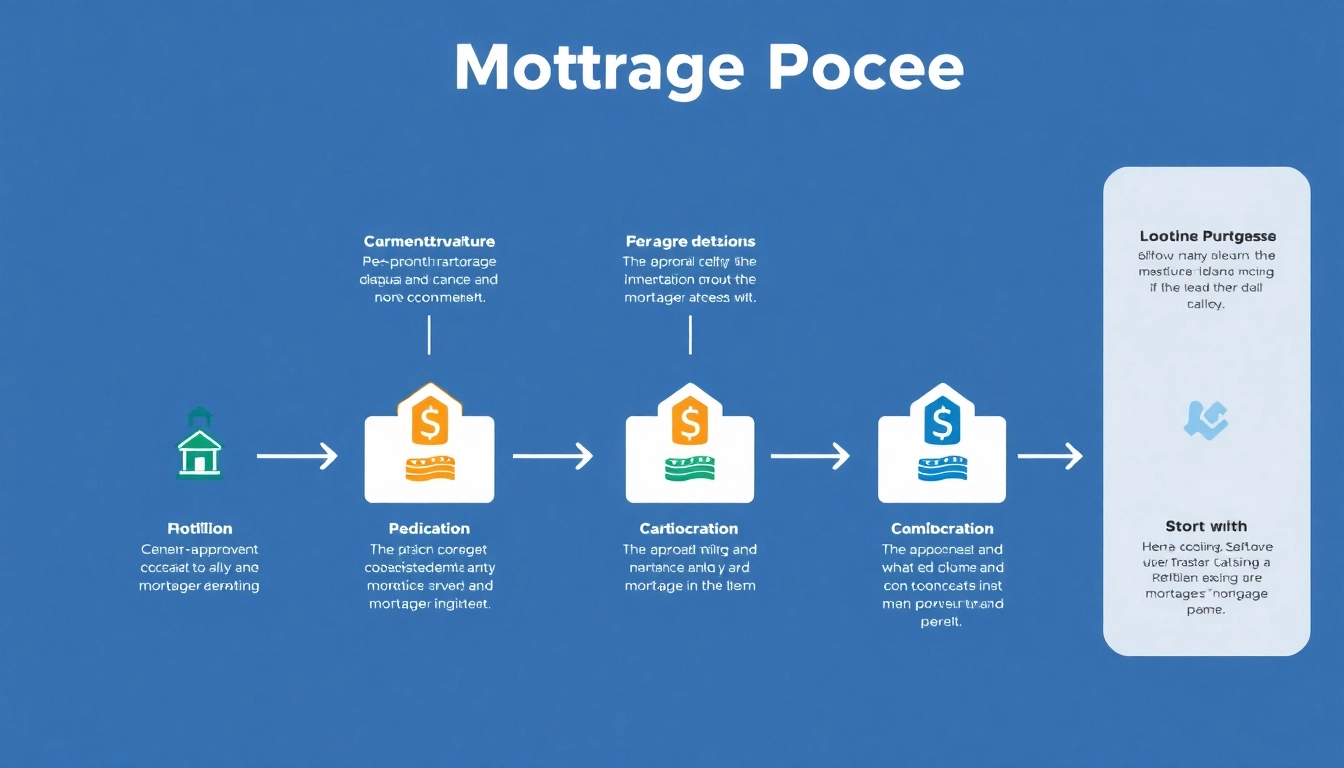The Mortgage Process for Lenders: An Overview
Navigating the mortgage process for lenders can be intricate, involving a range of steps that demand both precision and expertise. Understanding this process is not only crucial for seasoned lenders but also for those new to the field, allowing them to enhance their effectiveness in meeting borrower needs and improving their own operational efficiency. This comprehensive guide will break down the mortgage process into key stages, clarify essential terminology, and delineate the responsibilities that lenders typically carry throughout the journey.
Understanding Key Terminology
Before diving into the process, it’s important to clarify some essential terms that will recur throughout the discussion:
- Pre-Approval: A preliminary step where lenders assess a borrower’s financial situation to indicate how much they can borrow.
- Underwriting: The process of assessing risk in lending; this includes reviewing the borrower’s financial and legal documents.
- Closing: The final step where the loan is finalized, and the borrower completes their purchase.
- Escrow: A financial arrangement where a third party holds assets until predefined conditions are met.
Stages of the Mortgage Process
The mortgage process typically consists of several stages:
- Pre-Approval
- Loan Application
- Loan Processing
- Underwriting
- Closing
- Post-Closing
Each of these steps plays a critical role in determining whether a mortgage application is successful.
Common Lender Responsibilities
Lenders are responsible for carrying out multiple tasks to ensure a smooth mortgage process:
- Evaluating borrower applications.
- Collecting and reviewing documentation to support loan approvals.
- Communicating with borrowers throughout the process to keep them informed.
- Ensuring compliance with federal and state regulations.
Step 1: Pre-Approval Insights
Importance of Pre-Approval
Obtaining pre-approval is an essential first step in the mortgage process. It signals to sellers that the borrower is serious and financially capable of proceeding with the purchase. For lenders, pre-approval helps identify the most reliable borrowers, reducing workload later in the process.
Documentation Required for Pre-Approval
To achieve pre-approval, lenders typically require a set of documents, including:
- Proof of income (e.g., pay stubs, W-2 forms).
- Credit history reports.
- Bank statements.
- Information on existing debts.
Gathering these documents allows lenders to assess the borrower’s financial stability accurately.
How Lenders Evaluate Pre-Approval
During the pre-approval process, lenders look at several factors:
- Credit Score: A critical metric that can impact interest rates and terms offered.
- Debt-to-Income Ratio (DTI): The percentage of a borrower’s monthly income that goes toward servicing debt; a lower DTI indicates a healthier financial status.
- Employment History: Stability in employment can enhance a borrower’s profile, showcasing reliability.
Step 2: Application and Documentation
The Application Process Explained
Once pre-approval is secured, borrowers move on to the application. This step involves filling out a mortgage application form where detailed information about the borrower and the property is provided, indicating their intent to borrow funds.
Key Documentation Needs
Beyond the documentation required for pre-approval, additional documents may be necessary at this stage, including:
- A formal loan application.
- Property purchase agreement.
- Detailed financial statements, including other assets or income sources.
Submission Process to Lenders
After compiling the necessary documentation, borrowers submit these materials to their lender. It is vital for lenders to have a streamlined process to handle application submissions efficiently, ensuring that all documents are received, organized, and reviewed promptly.
Step 3: Loan Processing and Underwriting
What Happens During Loan Processing?
Loan processing typically involves the following tasks:
- Verification of the borrower’s credit and employment information.
- Order an appraisal of the property to establish its value.
- Initiate the title search to confirm property ownership and identify any encumbrances.
This phase is critical in ensuring that the property being financed meets all necessary guidelines for lending.
Role of Underwriters in the Mortgage Process
Underwriters are pivotal in the mortgage process. They analyze the borrower’s information against the lender’s guidelines and policies. Key responsibilities include assessing risk and making final decisions on whether to approve or deny a loan application.
Common Issues Lenders Face in Underwriting
Lenders often encounter common challenges during underwriting:
- Insufficient documentation: Missing or inadequately completed documents can delay the approval process.
- Property appraisal discrepancies: If the property’s appraised value is lower than anticipated, it may affect the loan amount.
- Borrower credit issues: Any unexpected changes to the borrower’s financial standing could lead to additional scrutiny.
Step 4: Closing the Loan
Preparing for the Closing Meeting
Closing involves the finalization of the mortgage. Preparation is crucial here, as lenders need to coordinate with various stakeholders, including the borrower, real estate agents, and title companies, to ensure all documents and funds are ready.
Final Steps for Lenders and Borrowers
During the closing meeting, the following occurs:
- Signing of the mortgage documents by the borrower.
- Transfer of funds from the lender to the seller.
- Final inspections and ensuring the title is clear.
Once all parties have signed and the funds have been transferred, the property is officially transferred to the borrower.
Post-Closing Considerations for Lenders
After closing, lenders maintain several responsibilities:
- Monitoring loan performance: Keep track of mortgage payments and communicate any issues with the borrower.
- Handling customer service inquiries: Address any questions or concerns from the borrower post-closing.
- Managing escrow accounts: If applicable, lenders must handle the management of property taxes and insurance during the loan’s life cycle.
Conclusion
Understanding the mortgage process is vital for lenders to effectively serve their clients and streamline operations. By grasping the steps from pre-approval through to closing, lenders can better navigate the complexities involved, enhance borrower satisfaction, and add to their business success. This comprehensive overview lays a strong foundation for both seasoned professionals and newcomers in the field, enabling them to excel in the competitive world of lending.


